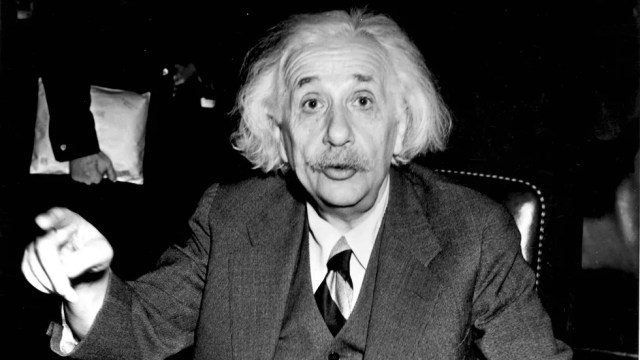Practicing Skills In Your Sleep Can Be as Effective as Physical Training

Mental training is arguably as important as physical fitness. That argument is gaining strength as a growing body of literature unravels the once-mysterious connections between consciousness and movement. We know that the murky domain of subconscious and autonomic actions greatly influences our waking lives. Now we’re learning how to train our unconscious selves for the benefit of our daily actions.
Neuroscientist Rodolfo Llinás attributes this skill to the art of prediction. Before consciousness arose in multicellular creatures, primitive life developed a nervous system to navigate through its environment—a biological property he terms ‘motricity.’ By predicting where it has to move the organism ensures its survival.
Interestingly, Llinás noticed that thinking fires motor neurons, the pathway we use to move our bodies. He believes thinking is an internalized form of movement; what we call consciousness is a mental representation of this phenomenon. Our mental maps allow us to predict how to navigate our environment. Combined with memory, our inner GPS creates and constantly updates this road map of prediction: move here, don’t go there, act this way but not like that.
Athletes have understood this for some time: visually picture yourself performing your sport and you strengthen the motor connections between brain and body. Indeed, just picturing movement fires the same neurons as if you were doing it. Motricity meets metacognition.
This we’ve known for some time. But what about training while asleep? We know proper rest leads to better performance. Plenty of evidence proves the all-night cram to be a myth. A better time to retain information is after cardiovascular exercise. This makes sense. We’re designed for movement. Hunched over books all night without sleep is not an optimal training program. Eight hours of shuteye followed by a quick 5k is.
What’s happening during those eight hours, though? More to the point, can we use that time for training as well?
Turns out we can. Dr. Tadas Stumbrys decided to investigate whether sleep training had any positive correlation with physical performance. The vehicle he used was lucid dreaming, a unique mental state in which consciousness and the unconscious seemingly merge. While some people naturally acquire this skill, there are training methods to help you learn to take control of your dreams, affording you a Matrix-style cinema screen inside your head every night.
Stumbyrs and team had four groups—“frequent lucid dreamers (25%), a mental practice group (23%), a physical practice group (24%) and a control (no practice) group (24%)”—engage in a sequential finger tapping exercise. Alarms rung in the night to signify the commencement of their assigned practice. They were measured the following day for improvements.
In the end all three practice groups improved their physical skill. Interestingly, the lucid dreaming group improved more than the physical practice group by 3 percent and the mental rehearsal group by 8 percent.
The neural mechanisms responsible for physical movement are similar between the three states of consciousness studied: waking, lucid dreaming, and daydreaming:
A recent brain imaging study showed that brain activity in the sensorimotor cortex that is responsible for controlling our physical movements is similar during imagined and lucidly dreamed movement, thereby allowing motor learning to occur.
In his book, Waking, Dreaming, Being, philosophy professor Evan Thompson investigates consciousness through the lens of lucid dreaming, a topic he’s studied for decades. Dreaming isn’t random, he writes, but a “spontaneous mental simulation” that helps us imagine ourselves in the world. While awake we envision a reality we’d like to create and then pursue its manifestation—metacognition and motricity. This is also possible when you know you’re dreaming.
Borrowing from Buddhist philosophy, Thompson writes that the key is to understand “witnessing awareness,” which is essentially what we do while conscious and unconscious. This is the process of the little me inside my head picturing the physical me in the ‘real’ world. Just don’t confuse this for dualism. This is all one me.
One way to strengthen this inner dialogue of thought and action, of perception, prediction, and movement, is meditation. This discipline of self-awareness helps cultivate an ability to step back from daily patterns and envision yourself as part of the larger world, which changes your relationship to your actions. The same holds true while lucid dreaming.
Once you’re able to sustain the lucid dream state, he writes, you can transform it:
Use your imagination to manipulate the dream. Be playful. Change things and transform them…Explore the plasticity of the dream. In this way, the mind’s supple nature will manifest, and you’ll gain a deeper understanding of the dreamscape as a mental construct, a product of imagination.
As the study shows, the imagination is the thoroughfare for the manifestation of ideas into reality while asleep and awake. Envisioning the goal is the first step in physically acting on it. All life is movement, from the neuronal firings of an idea to our bodies moving through space to accomplish it. Lucid dreaming turns out to be yet another field in which to sharpen our skills, another step in this complex and fascinating journey of self-understanding and self-mastery.
—
Derek Beres is working on his new book, Whole Motion: Training Your Brain and Body For Optimal Health (Carrel/Skyhorse, Spring 2017). He is based in Los Angeles. Stay in touch on Facebook and Twitter.





